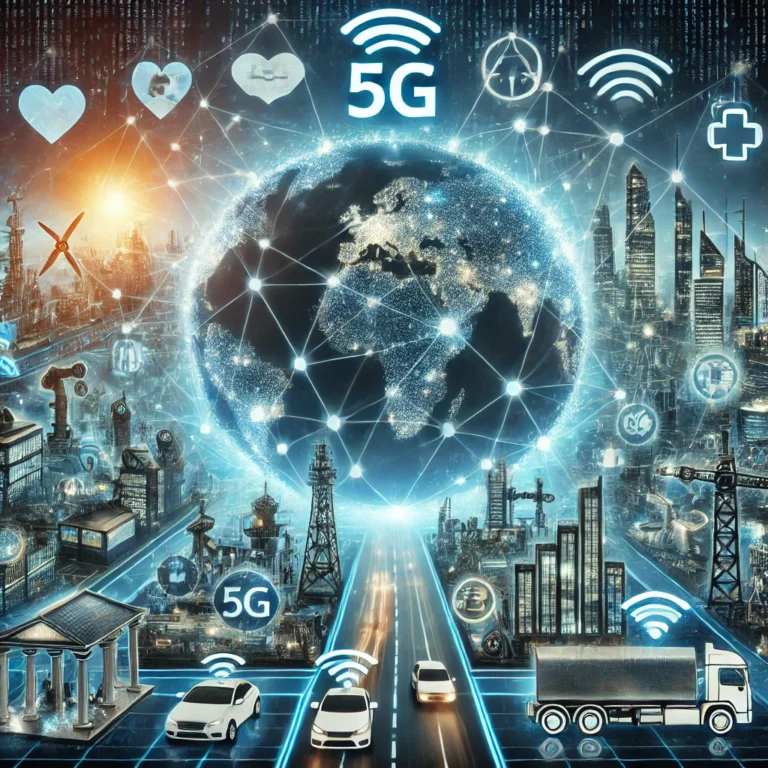The History and Future of Ericsson Phones: From Pioneering Beginnings to 5G Innovations
Ericsson, a Swedish telecommunications company, has played a crucial role in shaping the global mobile phone industry. While the company is primarily known for its infrastructure and network technology today, its early involvement in mobile phones was significant. Over the decades, Ericsson went through various phases—rising as a leader in mobile communication and later shifting its focus to network infrastructure, 5G technology, and the Internet of Things (IoT).
This article explores the history of Ericsson phones, their technological contributions, and the company’s future direction in the telecommunications industry.
Early Days of Ericsson: Setting the Stage for Mobile Communication
Ericsson was founded in 1876 by Lars Magnus Ericsson in Stockholm, Sweden. Initially, the company produced telegraph equipment and later focused on telephones, becoming a significant player in the burgeoning global telecommunications market. Ericsson quickly became a major manufacturer of telephone switchboards and fixed-line systems, providing infrastructure for communication long before the invention of mobile phones.
By the mid-20th century, Ericsson began to innovate in the mobile communication space. While the mobile phone as we know it did not yet exist, Ericsson was already exploring wireless communication methods that would eventually evolve into mobile technology.
Ericsson and the Birth of Mobile Phones: The 1980s to 1990s
In the late 1970s and 1980s, the world saw the development of the first mobile phone systems, and Ericsson was at the forefront of this technology. The company played a key role in the creation of the Nordic Mobile Telephone (NMT) system, which was launched in 1981 and became the first fully automated cellular network. This breakthrough laid the groundwork for mobile phones across Scandinavia and much of Europe.
Ericsson GH and SH Models
By the 1990s, Ericsson had established itself as one of the leaders in the mobile phone industry. Two of the most iconic early models were the Ericsson GH 337 and the Ericsson SH 888. The GH 337, released in 1994, was notable for its sleek, lightweight design and advanced features for the time. The SH 888, released in 1998, was one of the first phones with built-in support for wireless data transmission via WAP (Wireless Application Protocol), enabling limited internet access—a precursor to the modern mobile web.
At the same time, Ericsson’s focus on innovation extended beyond handsets to developing mobile communication infrastructure. They pioneered GSM (Global System for Mobile Communications) technology, which became the global standard for mobile networks. This enabled mobile phone usage to expand rapidly in Europe, Asia, and beyond.
The Ericsson-Sony Partnership: A New Era in Mobile Phones
Despite early successes, Ericsson struggled to keep pace with fast-growing competitors like Nokia and Motorola by the late 1990s. To strengthen its position in the mobile handset market, Ericsson entered into a joint venture with Japanese electronics giant Sony in 2001, forming Sony Ericsson.
Sony Ericsson’s Rise to Prominence
The Sony Ericsson partnership brought together Ericsson’s expertise in mobile communication and Sony’s prowess in consumer electronics. This collaboration resulted in a series of popular, stylish phones that integrated entertainment and multimedia capabilities. Notably:
- Sony Ericsson T68i (2002): This was one of the first mobile phones with a color screen, setting a new standard for mobile display technology.
- Sony Ericsson Walkman Series (2005-2010): These phones revolutionized the mobile phone market by integrating Sony’s Walkman brand into phones, making them highly popular among music lovers. The Walkman series was a precursor to today’s smartphones, which combine communication with entertainment.
- Sony Ericsson Cyber-shot Series: These phones focused on camera technology, featuring powerful camera sensors and lens systems, targeting the photography-savvy user.
The Sony Ericsson era was marked by significant success, particularly in the mid-2000s, when their phones were known for being cutting-edge in terms of design, camera quality, and multimedia functions.
Decline of Sony Ericsson
However, by the late 2000s, the mobile phone industry was undergoing rapid transformation with the rise of smartphones. Apple’s introduction of the iPhone in 2007 and Google’s Android ecosystem reshaped the mobile landscape, leading to intense competition. While Sony Ericsson tried to keep up by adopting Android in their later models, the company struggled to compete with the likes of Apple, Samsung, and HTC.
In 2012, Sony bought out Ericsson’s stake in the joint venture, effectively ending the Sony Ericsson brand. Sony continued to produce smartphones under its own name, focusing on the Xperia line, while Ericsson shifted its focus away from handsets entirely.
Ericsson’s Shift to Infrastructure and 5G
Following the dissolution of Sony Ericsson, Ericsson pivoted away from producing mobile phones to concentrate on what it did best: building the infrastructure that powers mobile communication. This decision allowed Ericsson to position itself as a leader in network technology, particularly in 4G and, more recently, 5G.
Ericsson’s Role in 5G Development
Ericsson is one of the top global players in the development and deployment of 5G networks, the next-generation wireless standard that promises faster speeds, lower latency, and support for a broader range of devices. The company has invested heavily in 5G research and infrastructure, working with telecommunications companies around the world to roll out 5G networks.
5G is expected to revolutionize industries by enabling advances in autonomous driving, smart cities, virtual reality, and more. Ericsson’s work on 5G spans several key areas:
- Network Equipment: Ericsson provides telecommunications companies with the necessary hardware and software to build and maintain 5G networks.
- IoT (Internet of Things): As 5G supports a greater number of devices, Ericsson is focusing on IoT applications, enabling connected devices to communicate seamlessly, from smart appliances to industrial machinery.
- Private Networks: Ericsson is also exploring the potential for private 5G networks, which would allow businesses to have their own tailored network infrastructure for secure and efficient communication.
The Future of Ericsson: From 5G to 6G and Beyond
As the telecommunications industry moves towards a future of ubiquitous connectivity, Ericsson remains at the forefront. The company is not only driving the rollout of 5G but also looking ahead to the possibilities of 6G, which could become a reality in the 2030s. 6G is expected to push the boundaries of wireless communication even further, with potential applications in areas like:
- Terahertz Communication: 6G could utilize frequencies in the terahertz range, enabling even faster data transmission and new forms of wireless communication.
- AI-Enhanced Networks: Artificial intelligence is expected to play a critical role in 6G networks, enabling smarter, more efficient communication and network management.
- Holographic Communication: Ericsson’s vision for the future includes immersive communication experiences, such as holographic calls, which would allow people to interact as if they were physically present in the same space.
While the company has moved away from producing consumer handsets, Ericsson’s impact on the telecommunications industry remains significant. Its pioneering work in mobile infrastructure has made it a crucial player in the development of global communication networks, and its ongoing efforts in 5G and beyond ensure that it will continue to shape the future of communication.
Conclusion
From its origins in telegraph equipment to its leadership in mobile phones and now in 5G technology, Ericsson has remained a cornerstone of the global telecommunications industry. While the company no longer produces consumer handsets, its contributions to mobile communication—especially through the iconic Sony Ericsson partnership—are undeniable. As Ericsson focuses on network infrastructure and the future of 5G and 6G, the company continues to influence the way the world stays connected, enabling faster, more reliable communication for billions of people worldwide.






